How a fragrance concept became a fully realized brand experience.
Concept, Storytelling, Packaging Design, Branding, Model Casting, One-Page Ad, Animation, Typography, Generative AI, Music, Production.
The 30 seconds GenAI hybrid animation for ROSE – 4:3 format
The Brief
Create a concept-testing campaign for a luxurious fragrance development, ROSE.
This includes the creation of packaging (bottle), branding (with no association to any established house), and a marketing ad. The campaign should feel fully realized (simulating a real-world product launch) and express how it resonates with the intended target audience.
Objective: determine whether the product, aesthetic, vibe, and story connect with the audience. The campaign also serves as a proof of concept to present to stakeholders, allowing evaluation of the fragrance’s potential and emotional appeal before investing in production.
Solution: GenAI Rendering for Packaging and Video
By combining generative AI with other creative tools, a hyper-realistic commercial can be developed in a time-efficient way. This process includes product design, 3D rendering simulations, talent casting, footage generation, animation, music composition, and even a simulated social media launch for user testing.
More than just a product design concept, it becomes a fully realized brand experience.

Logo for Rose
Process
This project blends traditional design thinking with generative AI to explore, test, and refine a product concept. Each step contributes to shaping ROSE into a fragrance that feels fully developed.
1. Bottle Design
A. First research
My initial sketches aimed for a literal representation of a rose, the flower, with a mystical touch: a pedestal that turns it into a chalice.
We are chasing the late-teenage vibe, which lives in contradictions: both delicate and spiky, fragile and fierce, grounded and magical.
The mood board features high-concept references: Chanel for sophistication, Dior for power, and Jean-Paul Gaultier for audacity.
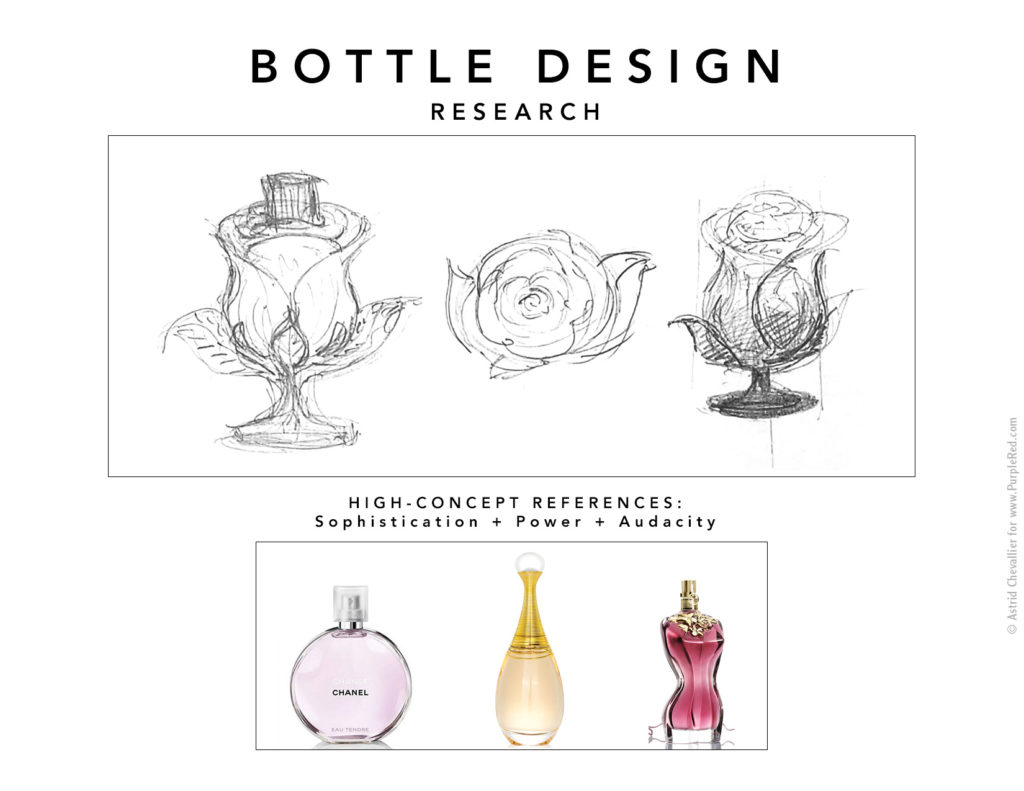
Sketches for the bottle design + high-concept references
B. using AI to generate rendering
Prompts were fed into several generative AI tools to refine the design concept and explore visual options. It took multiple iterations, and switching between different models, to reach the right combination of shape, material, and texture.
For example, the addition of a metallic cap helped reinforce the concept of duality and adding a sophisticated edge to the design.
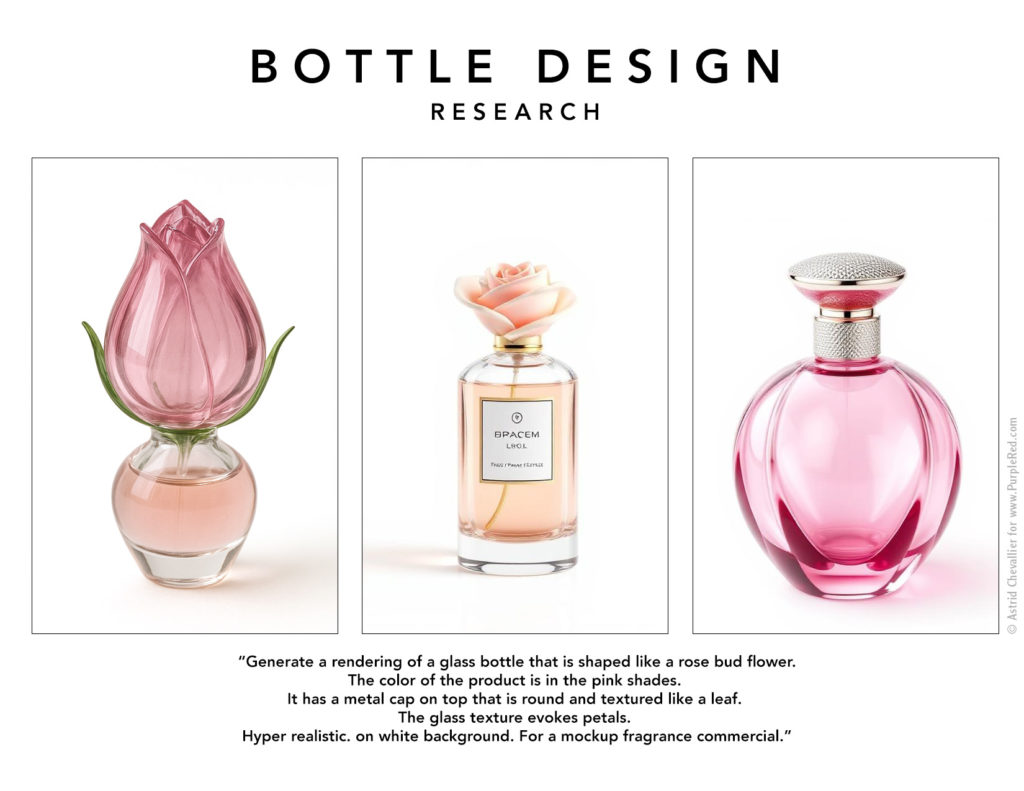
Product design research, using Gen AI
C. Final Design
Upon finding a generative AI rendering that captures the shape and texture I envisioned, I focused on refinement.
(Interestingly, the process revealed a common limitation: AI-generated fragrance bottles often look like dusty relics from a great-grandmother’s attic).
Bringing the image into Photoshop allowed me to regain full creative control: adding color correction, masking, generating transparency, and creating a reflection. These manual interventions transformed the raw rendering into the luxurious object I originally imagined.
This step is essential, as it helps defines the sophistication of the product we’re creating. Adding typography further positions the resulting image as a commercial product.
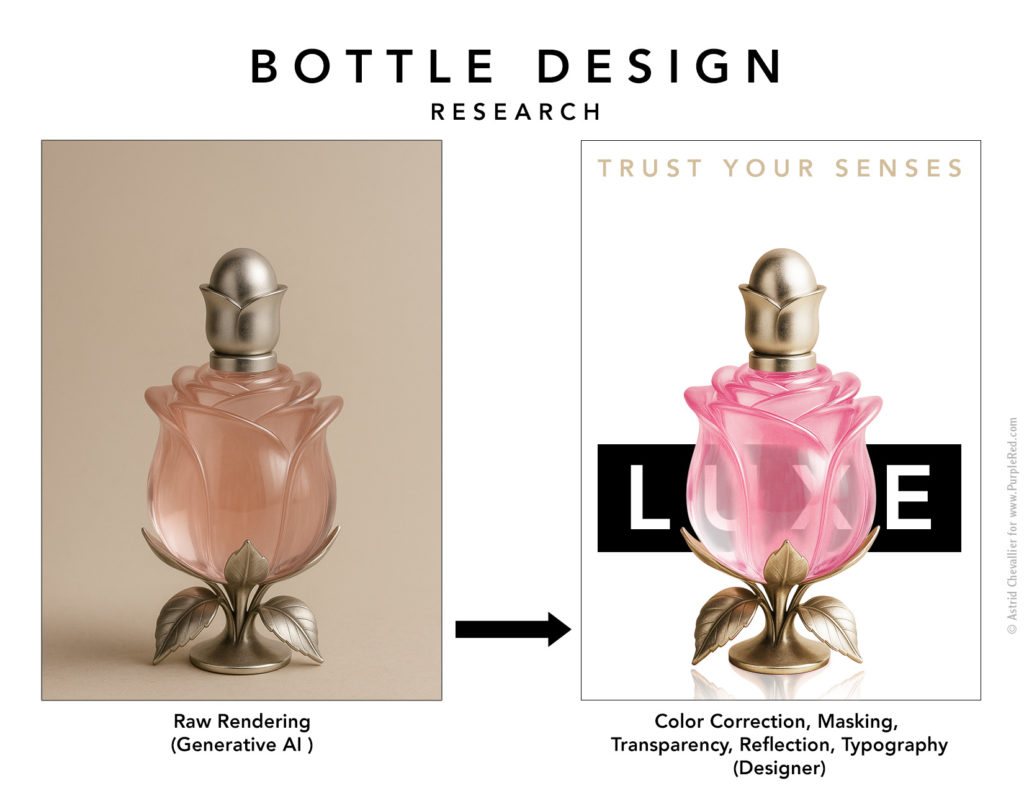
From raw Gen AI rendering to sophisticated commercial product
D. 360° Animation
The final design was fed back into a generative AI model, which was prompted to produce a full 360-degree rotation
This allows for a complete visualization of the bottle from every angle, bringing the concept one step closer to a presentation-ready prototype.
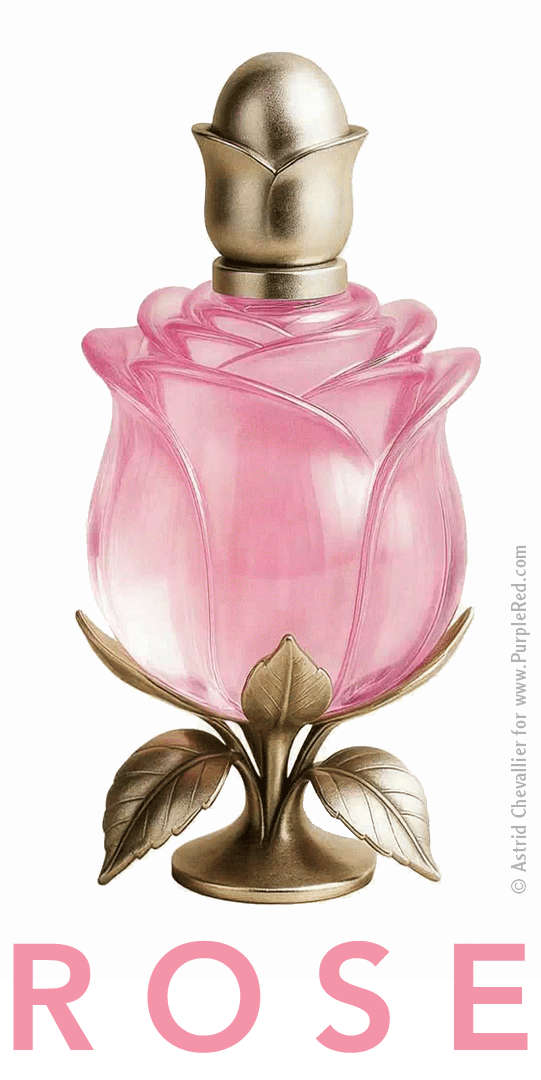
The Bottle Design Animation
2. Casting a model for the campaign
To bring the brand to life, finding the right model is key.
The figure must embody the same duality as the fragrance, both emotionally and visually.
A. Generating AI models
The casting process aimed on finding a presence that reflects the fragrance’s contrast: delicate yet fierce, grounded yet ethereal.
Feeding prompts into generative AI tools produced a wide variety of model candidates, each capturing a different interpretation of this tension. Given the target demographic of late teens, the model on the right stood out as having the potential to truly authentically the spirit I was looking for.
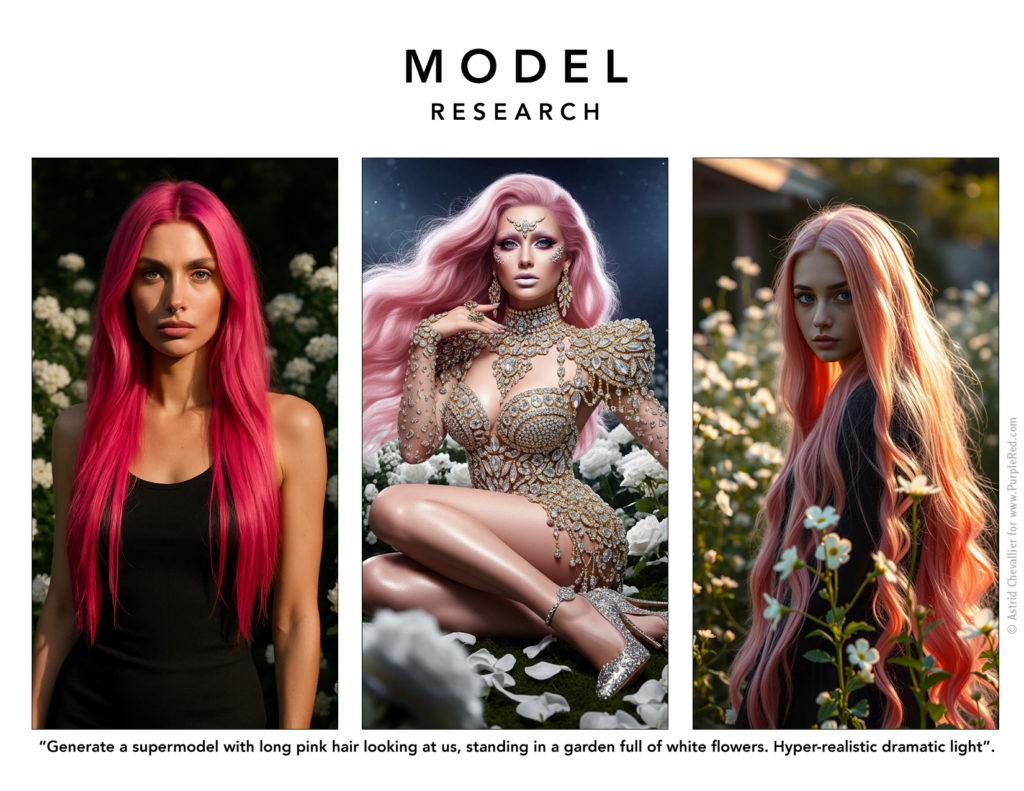
Raw models created using Gen AI
B. Creating the FIGURE
The raw Gen AI output had potential, but it needed significant retouching to evolve from a backlit snapshot with uneven lighting and styling into a brand figure.
After going through my Photoshop “magic room,” the image was color-corrected, carefully retouched, and enhanced with a soft glow. The focus was placed on the intensity of the eyes and the softness of the mouth; a combination that perfectly captures the duality I’m after.
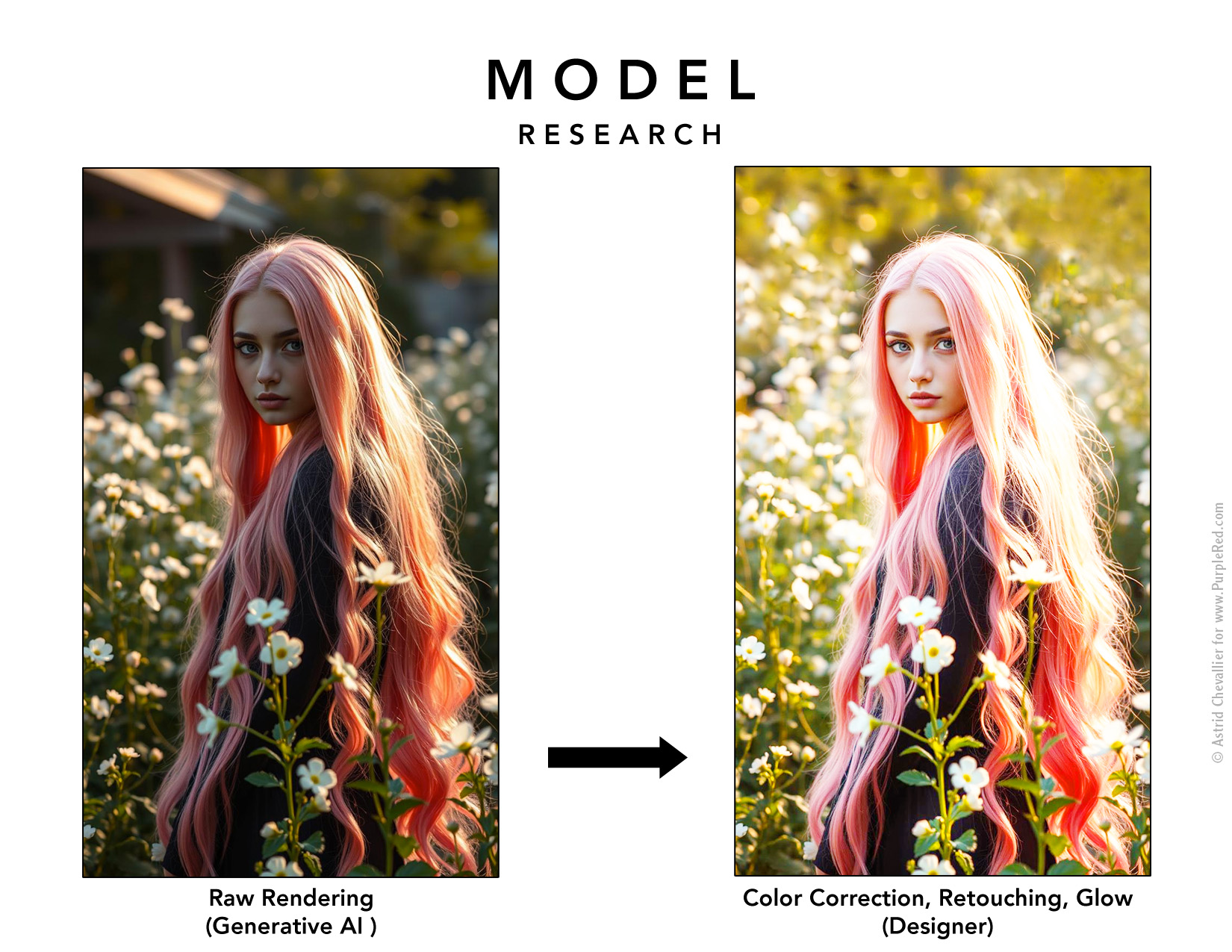
From raw Gen AI rendering to brand figure
3. Creating one-page Ads
A one-page Ad serves as a reference for the campaign; it is a single space where all key elements converge and can be visually balanced and refined.
This is the moment when the entire concept comes together, forming a foundation from which further variations and formats can emerge.
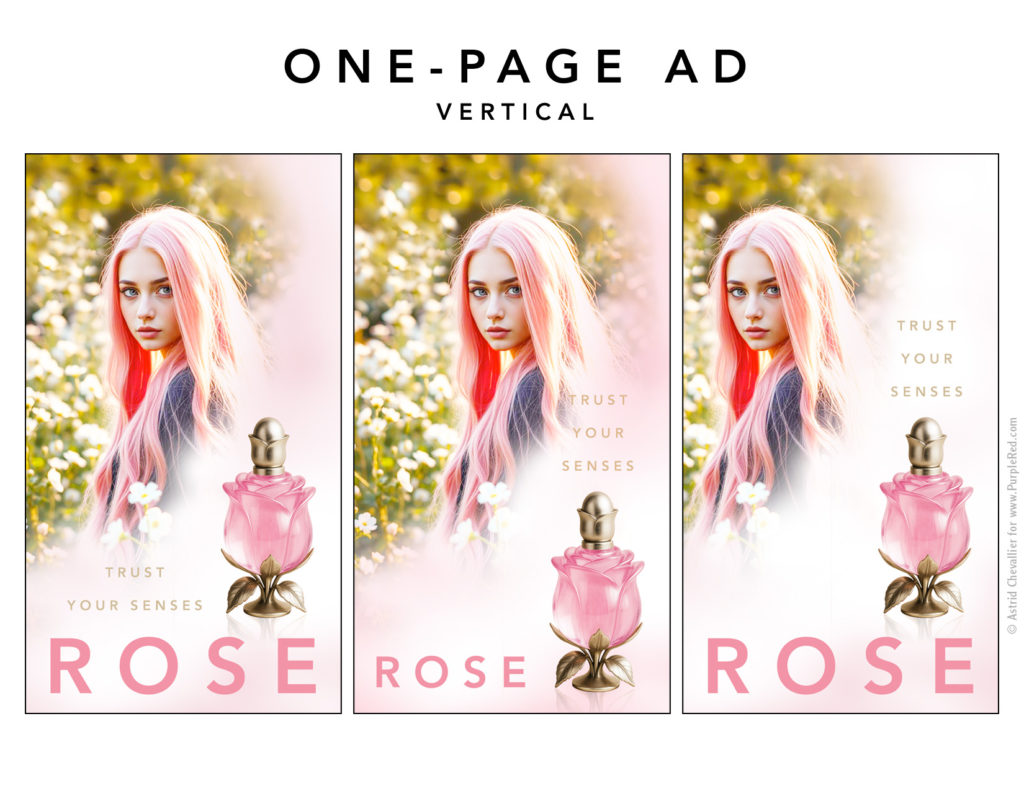
One-page Ad – Vertical: explorations
This is also the moment to make subtle but essential adjustments, such as warming up skin tones, sealing the exact hue that is going to be used throughout the campaign, and fine-tuning typography. It’s about ensuring that every piece fits seamlessly into the overall composition, creating visual harmony and establishing brand consistency.
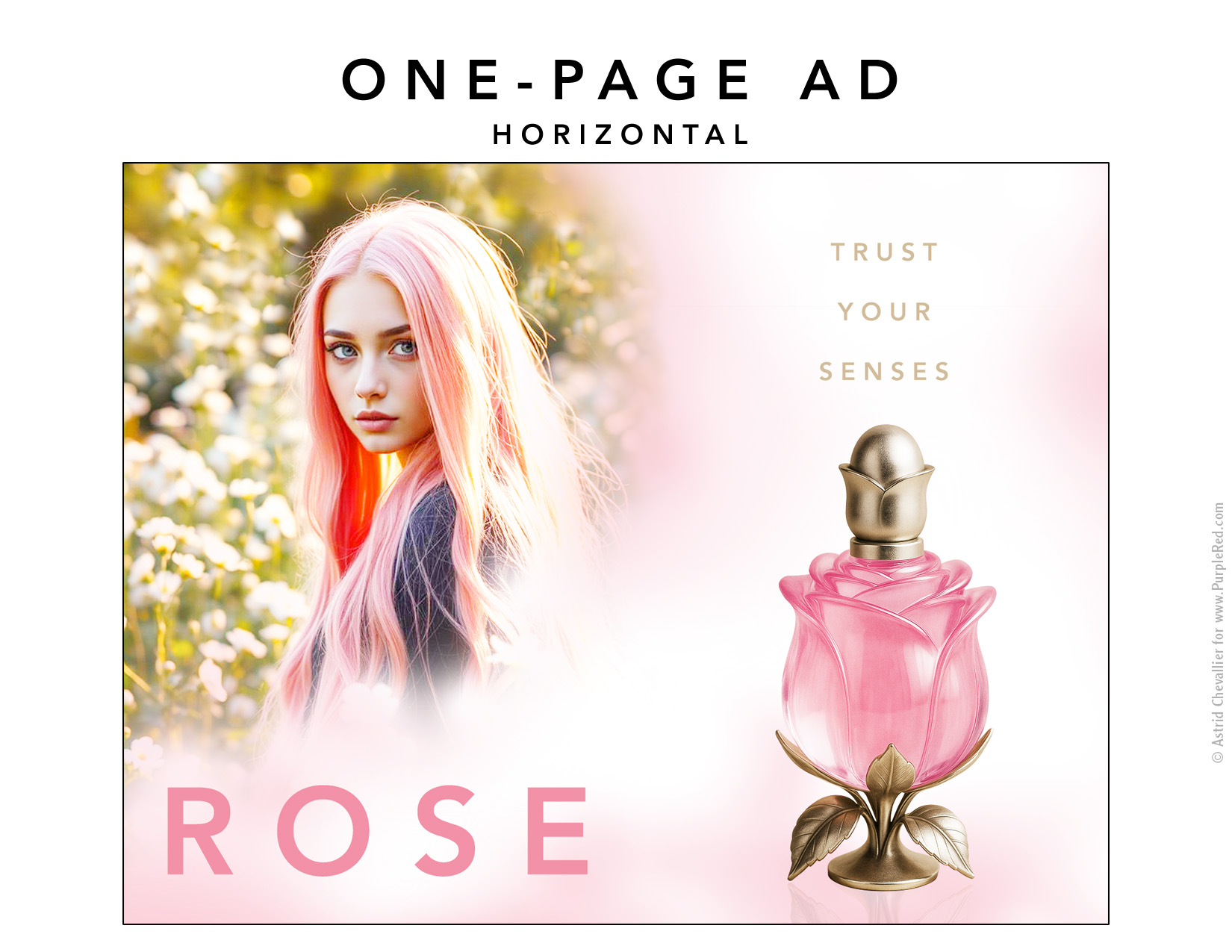
One-page Ad – Horizontal: reference
4. 30-second Animated Ad
A. Rebuilding the ad for video editing
The ad was reconstructed element by element, allowing each component to be edited independently: the model, the white/pink background, the bottle, the title, and the tag line.
This approach gives flexibility and control over each part of the animation.
B. CREATING FOOTAGE
The still image of the model was used a reference in Gen AI, in order to create image-to-video footage. It is a trial and error process, that often results in odd outputs: the model might age in seconds, switch outfits from one frame to the next, or misinterpret “intense and mysterious” as “bored and tired”.
Refinement and careful selection are key to getting usable material. Further down the line, additional trimming, timing adjustments, and camera movements like zooms are often applied to enhance the flow and coherence of the sequence.
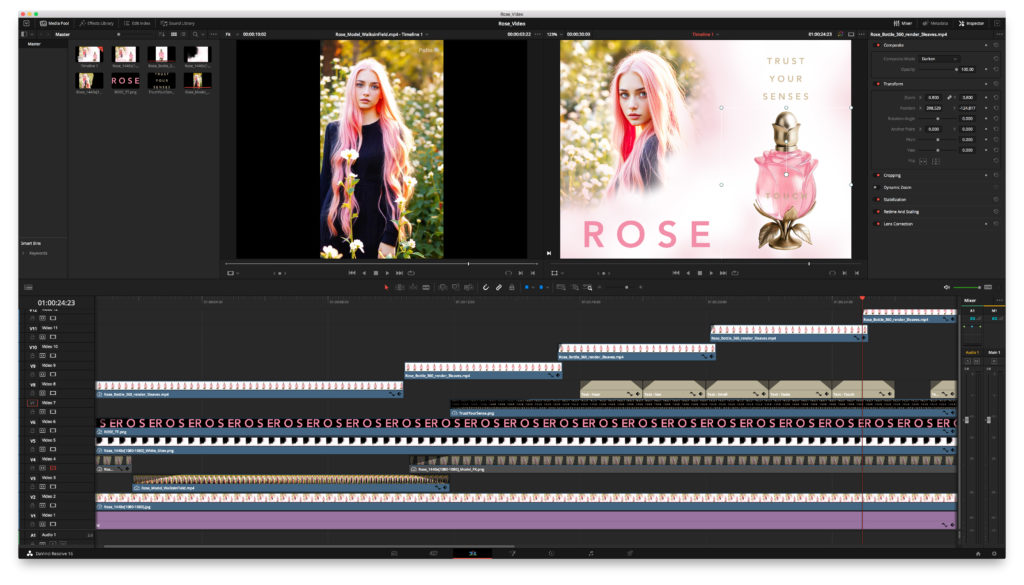
Editing: putting the video elements together
C. Music
The music was composed using generative AI, with multiple segments layered and blended to create the final soundtrack.
With a background in music theory, songwriting, and production, I approach the sound design efficiently and love to craft short format pieces that hit the right emotional tone.
D. Final Adjustments
This stage is all about fine-tuning: integrating typography as part of the storytelling, looping the bottle, adjusting the timing of each element, and crafting a mysterious and rich sensorial feel.
Subtle movements were also added to the still picture of the model to evoke the illusion of life. Every element is carefully placed and timed, each one playing a specific role in delivering the emotional and visual impact of the campaign, and creating the narrative.
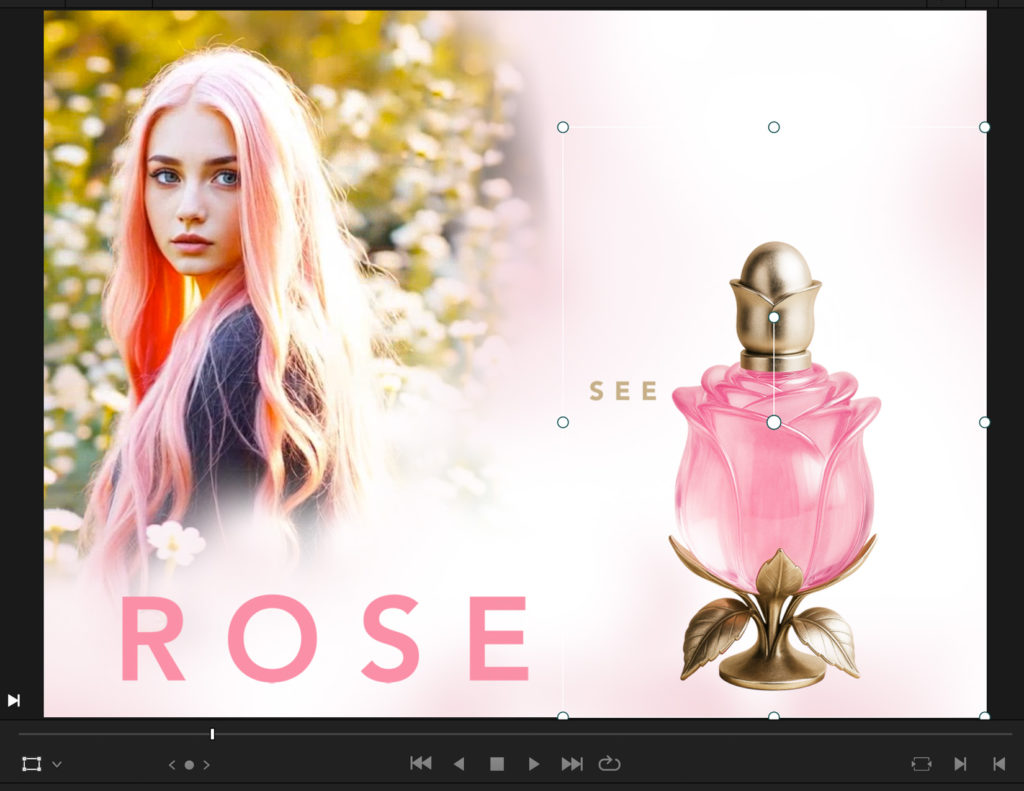
Adjustments: timing is key!
Result
Pairing product design with a fully visualized marketing campaign creates a powerful tool for evaluating a concept before the product physically exists. Once validated by stakeholders, the campaign can be launched as a market test and help gather feedback without the need for expensive upfront investment in physical prototypes. This approach allows other teams in product development, marketing, or investment to immediately grasp the vision and its potential. It offers a realistic testbed for audience response and provides a framework for decision-making, iteration, and storytelling, ultimately leading to launching a product that is informed by real audience insights.

Screenshot of the 30-second video on iPad
